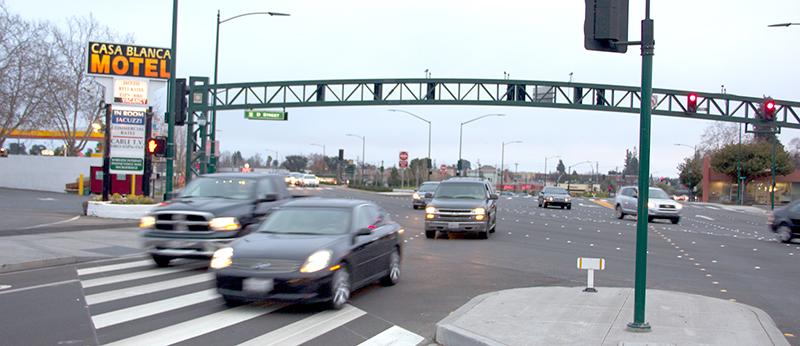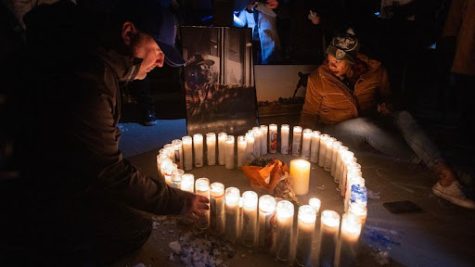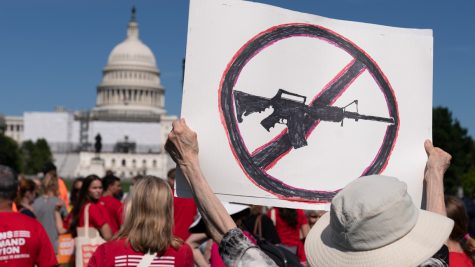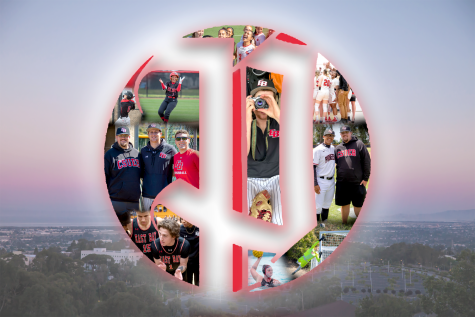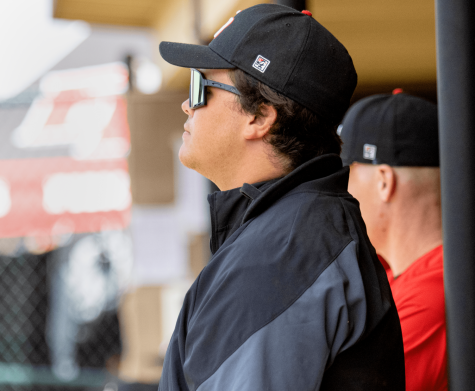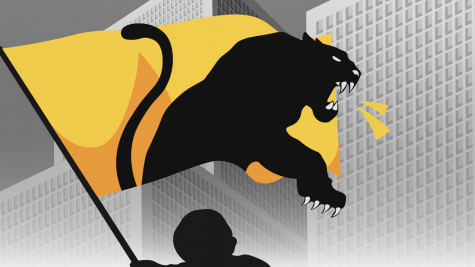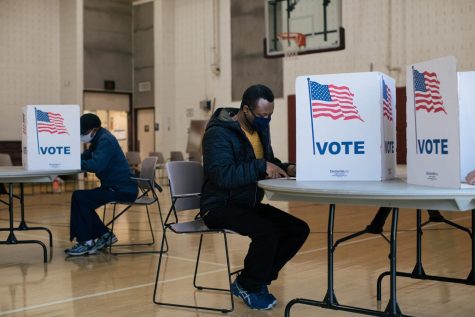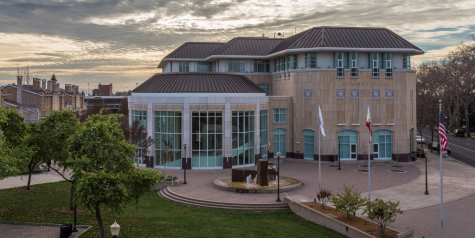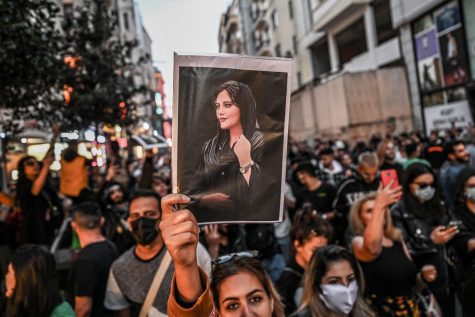Hayward Loop influenced by state interests
A quick drive down B Street, which strikes into the center of the downtown hub of Hayward, reveals 19 closed businesses.
Many things could cause this, said Councilmember Greg Jones. The recent recession, the management of novice business owners, and the size and location of the land parcels, each could play a part into whether or not a new business will succeed.
But Rudy Grasseschi, owner of shoe repair shop The Cobbler on Foothill Boulevard, believes “the Hayward Loop” is driving away new businesses.
“Because we’ve been here for 55 years, we’re pretty well known, and people will find a way to get here,” Grasseschi said. “But it’s the poor business guy that’s only been around for two or three years and that’s not really established yet, he’s going to have a hard time getting business.”
The “Hayward Loop” is part of the larger Route 238 Corridor Improvement Project, which was passed on Nov. 27, 2007. Work started in August 2010 and was completed after almost three years of construction on Jun. 5, 2013. Hayward, a city on the San Francisco Bay, is the main thoroughfare for most of the East Bay traffic. Yet there is only one major freeway, 880.

Construction included new paved sidewalks along Foothill Boulevard and side streets, additional streetlights and improved landscaping to the downtown area. The loop controversially converted two-lane streets on segments of Foothill Boulevard, A Street and Mission Boulevard into large one-way roads for the purpose of smoother traffic flow.
Grasseschi says the city still has a chance to “fix it.” He believes the loop was created for commuters, not for the residents. At non-peak commuting hours the roads are completely empty. Even on the weekends the sidewalks are bare and the street are lifeless.
“One-way streets are not for Hayward,” said Grasseschi. “We’re still a horse and buggy town. But they’re trying to be like a big city like Danville, where there’s a lot of money… There’s not a lot of money in Hayward.”
The Cobbler is doing fine, Grasseschi says, but he plans to head back to city council after Jan. 1 to advocate adjustments to the loop. To be specific, he would like to see a crosswalk added back to Foothill Boulevard near his business.
He also sees the upcoming mayoral election in June 2014 as a potential referendum on the issue.

“Now is the time to put the pressure on them and ask them during the campaigning what they’re going to do about it,” he said.
Meanwhile, Penni Sanders of the Nu Revelations Christian Bookstore on Foothill Boulevard has experienced a lack of business. Sanders mused about different ways to broaden her store’s appeal, such as subletting half of the space to another business owner to sell Christian literature in Spanish.
However, Sanders estimated she would have to close her doors by Jan. 1.
“The construction has literally shut us down…we’re going on God’s grace at this point,” said Sanders. “So we don’t know after the first of the year if we can keep going, and that’s sad. Because then the city won’t have a [Christian] store. The nearest one is Dublin.”
Sanders said her business serves all sects of Christianity, from Mormons to Protestants to Catholics as well as Atheists.
“Once people think you aren’t here, they don’t really look for you. They may check maybe a week before Christmas because they’re thinking about buying gifts, and [to] see if you’re still here. But we’ve really been hurt by it,” said Sanders.
Construction on their street started a few months after she and her husband first opened for business in August 2010. She has been running her business in various locations for 28 years, she said.
Sanders said she tried to direct customers by phone to her store because parking is more difficult and “people thought we were closed.” But even then, Sanders finds it difficult to make a sale.
The situation became worse when city workers removed the sign from her store and two stores next to hers in July. Workers began to paint the storefront in October, and it was finished on Nov. 16, she said. Her storefront is now painted gold, but still remains without a sign.
As of publication, the bookstore is still in business, however Sanders could not be reached for further comment.
Jones was city manager when the Route 238 Corridor Improvement Project was passed. He was hired when the project’s architect Jesus Armas resigned from the position.
“I think the jury is still out on the effect on downtown, but for moving traffic it has been very effective,” said Jones, sitting in his office on A Street.
Jones owns Realty World, a business he runs with his wife. He reports zero loss in revenue, which he attributes to the nature of his business.
In spite of this, Jones admits he must direct customers by phone to his office. Google Maps and GPS have not yet updated their maps to adjust to the loop, which in turn has made getting to his business more challenging.
The project was part of a long struggle by the state to solve congestion problems that occur once commuters reach Hayward. Sections of Mission Boulevard and Foothill Boulevard were part of California State Routes 185 and 238 prior to completion of the project. The city had to negotiate the street’s design with the state in order to meet the state’s objectives for smoother traffic flow.
“If we do nothing, the state is going to come in here and impose something on us basically,” said Jones. “We had to do something.”
Initially, a freeway was proposed to cut through Hayward and relieve traffic jams and open up bottleneck areas. This was known as the “Foothill Freeway” and had been in the works since the 1960s. Residents bitterly opposed it since its inception.
“The state controls these roads,” said Jones. “[So the city thought] how can the city manage this and get some benefit? In terms of moving state traffic, [which was] the problem the state faced, I think it’s been effective,” said Jones.
From the perspective of a downtown resident and business owner, Jones said that he doesn’t feel the streets are pedestrian friendly. He admits he finds the five-lane road of Mission Boulevard “a little intimidating.”
Jones told the Pioneer that when he was newly hired as city manager, he thought the better alternative would have been to create an underpass at the “Five Corners” where Mission Boulevard, Foothill Boulevard and Jackson Street meet. However this would have almost doubled the project cost and the city was already under pressure to use state funds to construct something, he said, before the funds are taken back and allocated to other cities.
“It’s about money,” said Jones. “That would’ve been…another $70 to $80 million dollars above what was spent. So I think the financial realities were such that probably just wasn’t doable. But had money not been an object I think that would’ve been a better solution.”
While the loop has been controversial, there have been some real improvements to other parts of the city, said Jones, and the project should be looked at in its entirety. Traffic flow, the appearance of Mission Boulevard and the downtown area have improved.
Another benefit of the project is that the city now owns all parts of Mission Boulevard and Foothill Boulevard in Hayward. They are no longer state highways. Previously Caltrans operated all traffic signals. Now the city can adjust the timing of the lights as necessary.
The city also no longer must go through the state to conduct maintenance on its streets. Jones envisions the city cleaning up potholes and better maintaining its roads.
Hayward now possesses all of the property previously owned by Caltrans and at one time purchased by the state to build the doomed Foothill Freeway. Jones said the city plans to develop commercial properties along the hillside going up Carlos Bee Boulevard to California State University, East Bay.
This was not possible before because the city did not own the land. Some of the land had been purchased by the state back in the 1940s, he said.
“That was the assessment I think the city council made when they approved the project. Is this perfect? No. Do we love this? No,” said Jones. “But, is it going to overall benefit the community? And that’s often the decision a council has to make.”
Jones added that the project was not “etched in stone” and that the city is open to modifying elements of it. Parking was added back to Foothill Boulevard after it was initially removed, he said.
Businesses that are struggling have resources to get help. The Chamber of Commerce can represent them, they can email city staff, and they can attend city council meetings on Tuesday nights.
Alfredo Ornelas, owner of Avocado Freddy’s located at the Five Corners intersection downtown, recently went out of business. Ornelas, who could not be reached for comment, shut down his restaurant temporarily during the construction of the loop.
He tearfully asked members of the city council, at a previous meeting, why there had not been an economic impact report. Jones maintained that there had been one in the Final Environmental Impact Report.
“In the meantime the businesses that are here are on the brink of collapse,” Ornelas said in August 2012. “Bottom line is why wasn’t the economic impact studied? Why aren’t greater measures being made to mitigate the damages the project is causing?”
By law, if there is substantial evidence that a project will cause an impact on the environment, government agencies must release that information in a Draft EIR, then conduct community outreach meetings and later create a revised Final EIR. However, there is no requirement to create a report detailing economic impacts.
The FEIR states, “Economic impacts alone are not considered environmental impacts and are not required for consideration under CEQA unless they result in a related physical impact on the environment. Nevertheless, the DEIR does address business and economic impacts of the proposed project on DEIR pages 5-9 to 5-10.”
Pages 5-9 and 5-10 detail the increase in wait time certain streets will experience during peak traffic hours.
The Route 238 Corridor Improvement Project was funded by Alameda County Transportation Authority Measure B, the City of Hayward, developers and utility companies, the city’s website states.
Revenue made from the resale of land parcels purchased by Caltrans for the Foothill Freeway is also expected to fund the project.
The Foothill Freeway was first proposed in the 1960s, archival records from the Daily Review indicate.
“The freeway, planned for 20 years, would have run through the East Bay hills from Interstate 580 north of Hayward to Interstate 680 in Fremont…” the Daily Review reported in 1982.
In the 1980s, the city council revived the freeway idea as a way to alleviate traffic problems downtown, the TM Tribune reported. The six-lane expressway was set to begin construction by 1990 and would have displaced 1,000 people and cost $64 million. When adjusted for inflation, it would have cost $136 million in the present day dollars. The current reconfiguration of the downtown, in contrast, cost $111 million according to the FEIR.




